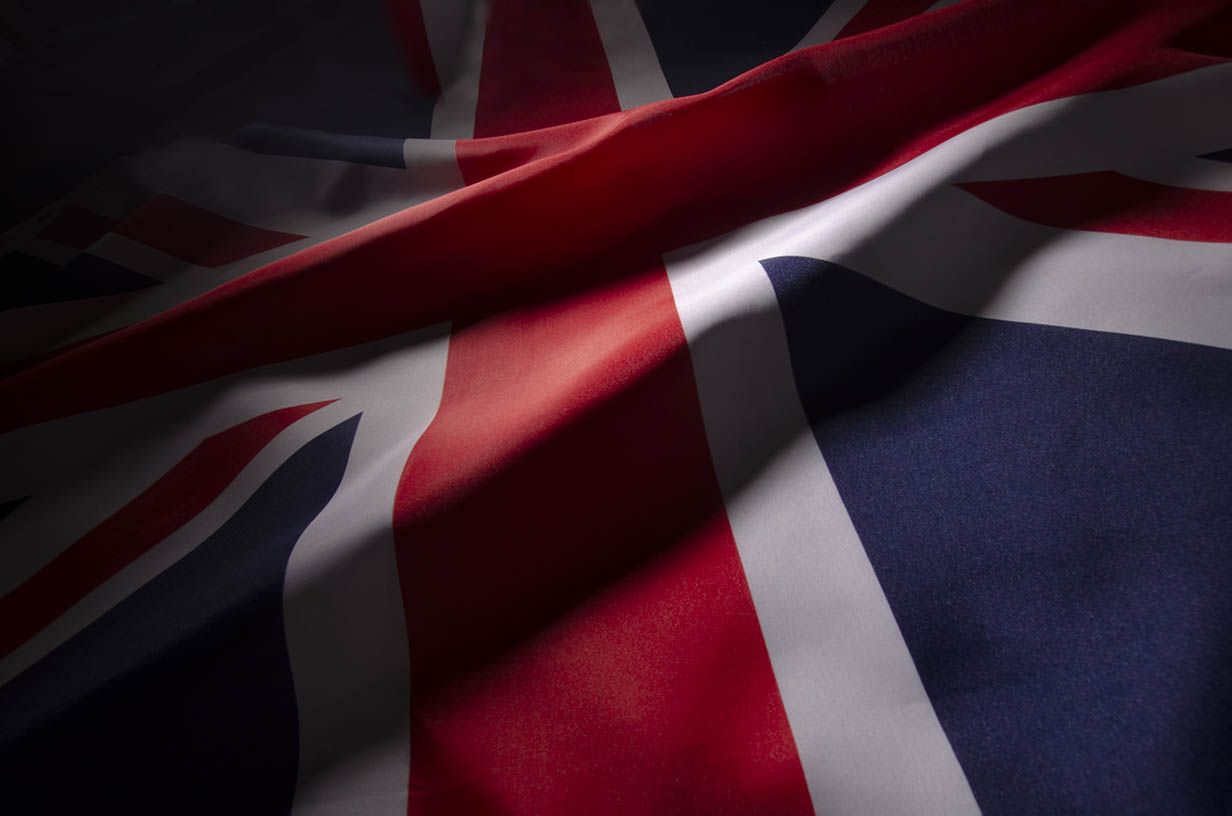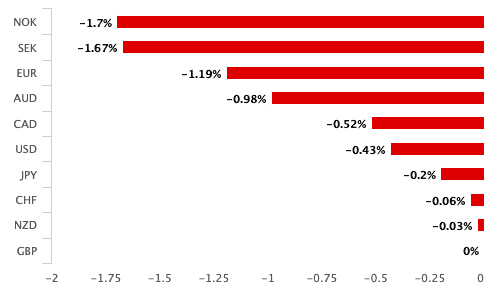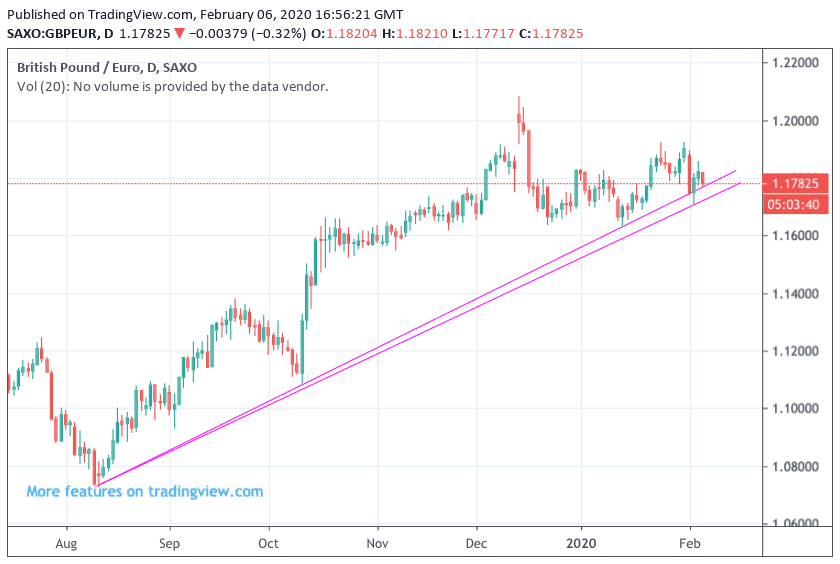Pound Sterling Rallies into the Weekend vs. Euro and U.S. Dollar
- Could GBP be a safe-haven as coronavirus fears spike?
- USD reacts to employment data
- EUR dragged lower by dire German industrial numbers

Image © Adobe Images
- Spot rates at time of writing: GBP/EUR: 1.0808, -1.75% | GBP/USD: 1.1852, -2.15%
- Bank transfer rates (indicative): GBP/EUR: 1.0520-1.0596 | GBP/USD: 1.1537-1.1620
- Specialist money transfer rates (indicative): GBP/EUR 1.0650-1.0701 | GBP/USD: 1.1650-1.1745 >> More details
The British Pound was bid higher ahead of the weekend, reclaiming the contested 1.18 level against the Euro while starting an attempt to scrape itself off a 6-week floor against the Dollar as a myriad of factors bore down on the global currency market.
The Pound's gains against the Euro come courtesy of a set of dire industrial production statistics out of the Eurozone, while against the Pound only managed to edge up a modest degree against the U.S. Dollar after employment numbers out of the U.S. economy on Friday afternoon came in above expectation.
Indeed, the strong figures out of the U.S. - where non-farm payrolls showed the economy added 225K jobs against expectations for 160K - mean the Dollar is likely to retain its crown as 2020's dominant currency.
However, there was some disappointments to be had in the employment numbers in that average hourly earnings for January read at 0.2%, below the 0.3% markets were looking for. Furthermore, the unemployment rate was unexpectedly notched up to 3.6%.
While the data could still allow the Pound to record a daily advance against the Dollar, we are aware that the Dollar is the currency market's outperformer and this is likely to remain the case for some time.
"We still hold the view that it is too early to bet against the USD. Short-term it is plausible that the Euro area, with its larger dependence on exports to China, will be affected more by the coronavirus than the US. Thus, there is currently no reason to believe that investors will change their view on the growth advantage of the US and thereby the inclination to hold USD," said Andreas Steno Larsen, Global FX/FI Strategist at Nordea Markets.
The Pound has had a poor week, losing ground to the majority of major currencies, however those losses were front-loaded into the Monday session and the UK currency has since been attempting to find its feet.

Above: GBP losses this week
It appears that with no major Sterling-specific headlines to worry traders, negative headlines affecting its peers are taking the lead and allowing the UK currency to end the week on a firmer footing.
The Euro was in the red towards the start of the European session after German industrial production figures all but confirmed a weak finish to 2019 for the continent's largest economy.
German industrial production fell 3.5% in December, more than reversing the decent 1.2% increase of November and disappointing a market that had looked for a 0.2% gain.
"Weakness in the German economy is dragging the Euro lower, with a sharp decline in industrial production building on the December contraction narrative highlighted in yesterday’s factory orders reading," says Joshua Mahony, Senior Market Analyst at IG. "The decline of 6.8% in comparison with December 2018 signals a radical underperformance for a critical growth sector for the eurozone."
The Pound-to-Euro exchange rate has risen back above 1.18 on the back of the data and in the process keeps alive the multi-month uptrend.
We had written this morning that the exchange rate had been threatening to break lower and erode its supportive uptrend, a scenario which would shift Sterling into a potential short-term bear market against its Eurozone counterpart.
In the event, it appears that the Pound is managing to hold onto its trend of appreciation.
Above: Two observable trendline support lines drawn on the daily chart. The uptrend remains intact, but barely.
We are also watching Sterling advance against the Australian Dollar as GBP/AUD finally snaps a four-day losing streak that saw it fall from 1.9747 down to 1.9165 on Thursday, before recovering to 1.9366 at the time of writing.
There appears to have been a decision by the global investor community to put the brakes on the coronavirus rally, or to be more specific, the rally that has dominated this week as markets sniffed the spread of the outbreak had peaked.
There was the view that while there will be an economic slowdown thanks to the disease, it would be short-lived and the recovery would be sharp.
However, there are some pragmatic heads in the analyst community who are warning of significant consequences to economic growth in 2020 as a result of the disease and there is a good sense some in the market are cottoning onto this view.
"There is a distinct underperformance for those markets which will likely continue to feel the effects of depressed Chinese growth, with crude, the Australian dollar and Chinese stocks likely to remain under pressure," says Mahony.
It is worth pointing out that the Pound has this week displayed a safe-haven quality when it comes to the disease: it rose last week as markets took fright on the rapid spread of the outbreak, only to fall this week as markets bet that all would be alright.
And here we are on Friday with markets in the red on resurgent fears regarding the impact of the disease on global growth, and the Pound is higher!
Perhaps it is not such a crazy idea to view Sterling as a safe haven on this particular geopolitical event, as the UK has a low direct trade exposure with China, particularly compared to a number of other safe haven currencies such as the Swiss franc and Japanese Yen who have notable trade links with China.





